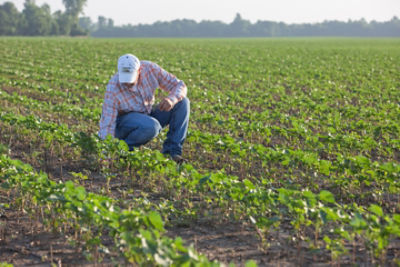
Safety
Making sure our products are safe – for people, animals and the environment – is our top priority
Agriculture is one of the most heavily regulated industries in the world—and we support regulatory processes designed to demonstrate the safety of our products, because safety is also our top priority.
In the United States, for example, our pesticide products are governed by the U.S. Environmental Protection Agency (U.S. EPA) and follow a rigorous review process to evaluate their safety—a process called registration review—that is repeated at least every 15 years, taking into consideration any new data. For each pesticide it reviews, the U.S. EPA evaluates hundreds of different scientific studies during the registration and re-registration process, relying on the best science available and placing high value on transparency in decision-making.
During the process, the U.S. EPA may request studies and data from manufacturers, third parties and the public and takes findings and questions to independent expert panels such as the FIFRA Scientific Advisory Panel and the National Academy of Sciences.
The U.S. EPA assesses and evaluates the potential for:
- Harm to humans (including risk from short-term toxicity as well as long-term effects such as cancer and reproductive system disorders)
- Harm to wildlife, fish and plants; including endangered species and non-target organisms
- Contamination of surface water or ground water from leaching, runoff and spray drift
Regulator Spotlight: The European Food Safety Authority
In the European Union, the European Food Safety Authority (EFSA) is the regulatory agency in charge of scientific advice and risk assessment for pesticides. EFSA is responsible for the peer review of the risk assessment of active substances used in plant protection products. It is also responsible for the evaluation of Maximum Residue Levels (MRLs) to ensure pesticide residues in food do not pose unacceptable risks to consumers. The evaluation of formulated plant protection products is carried out at national level by the regulatory authorities of EU Member States.
- For the evaluation and re-evaluation of active substances, a Rapporteur Member State is appointed to carry out the initial risk assessment. This assessment is then peer reviewed by EFSA together with all Member States. It is a transparent process with public consultations.
- This risk assessment is rigorous and active substances need to be proven safe for human health, animal health and the environment to meet the stringent approval criteria under EU regulation.
- The approval period is up to 15 years and active substances are systematically reviewed to ensure the latest scientific knowledge has been considered.
- Once EFSA risk assessment is complete, the approval decision goes to the European Commission and Member States as risk managers.
To learn more about EFSA’s thorough pesticide review process, visit EFSA’s website.
So, by the time a product gets to market, it has undergone rigorous review – at times multiple decades’ worth of scientific studies – and scrutiny by multiple government agencies as well as data from manufacturers, third parties like the FIFRA Scientific Advisory Panel and the National Academy of Sciences and the public.
A single crop protection product takes an average of 13 years to develop, a biotech trait takes almost 16 years and a new seed product can take seven years.
The reviews, which can cost as much as $300 million each, are designed to test, and retest, and test again, what impact, if any, the active ingredients in the products have on human, animal and environmental health. The products themselves are critical because, simply put, they help farmers grow more food (and fuel), to help feed a growing world. For example, American farmers produce 300% more per acre today than they did 70 years ago, allowing hundreds of millions of acres to remain out of production.
Are these products safe? Yes, products can be safely used by following label directions. They are not safe to ingest or be used for purposes other than intended. And most are not new – 2,4-D, for example, an active ingredient in one of our most-used products, has been around for more than 80 years. More than 4,000 rigorous, peer-reviewed studies – from the 1940s all the way through today – have found that 2,4-D products are safe for human and animal health, and for the environment, when used according to the label.
We are proud of our track record.
- In the U.S., Reklemel®, our first-of-its-kind, selective nematicide product, is one of the first new active ingredients to be registered under EPA’s updated policy incorporating Endangered Species Act assessments into the pesticide registration process.
- Our Enlist® herbicides are the first pesticides to successfully complete the comprehensive Endangered Species Act (ESA) Risk Assessment and Consultation process, following the EPA’s new evaluation framework for ESA.
- Corteva has won six Green Chemistry Challenge Awards presented by the U.S. EPA – more than any other agricultural company. The award is given to companies or institutions that develop new chemical products or processes that help to reduce or eliminate the generation of hazardous substances in the environment.
And we've made a public commitment that every newly developed Corteva product must meet our stringent sustainability criteria, which are aligned to the UN Sustainable Development Goals.
Transparency
Corteva supports industry and regulatory efforts to make safety information more readily accessible.